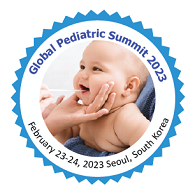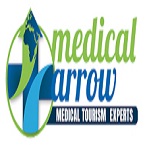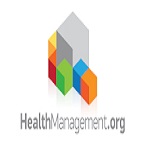About Conference
CONFERENCE SERIES is returning with its prestigious event on 14th International Summit on Pediatric Neurology to be held in in the beautiful city of Seoul, South Korea during February 23-24, 2023 the congress will revolve around the theme “Promoting Excellence by Investigating the Unexplored Areas of Pediatrics and Neurology “ Pediatric Neurology – 2023 is working in collaborations with other institutions and editorial board members and they are elated to invite you all to the International Conference on Pediatrics and Neurology to share best practices and experiences through keynote introductions, workshops, symposia, plenary lectures, Video presentations, Invited sessions and posters covering different kinds of topics and significant issues which affect us all from the research to the practical implementations.
Pediatric Neurology - 2023is an intercontinental event where scholars and experts will present their innovative research on the topics such as Pediatrics, , Neonatology, General & Clinical Pediatrics, Gastroenterology, Hematology, Nursing Pediatric Cardiology, Neurology, Dentistry, Surgery, Oncology and Care, Pediatrics Allergy and Infections, Nutrition, Pediatric Psychology, and Mental Health, Pediatric Clinical Case Reports and Pediatrics Dermatology are also invited to show their products at the conference venue.
Pediatric Neurology – 2023 has chosen, Seoul, South Korea as there are a number of world-leading companies, research institutes, and individuals who are active in various fields. We will be glad to be acquainted with you in South Korea, to enjoy the top-notch conference services and accommodation, visit the World heritage sites and enjoy the enchanting cuisine and delightful shopping.
Sessions & Tracks
1. Pediatric Medicine
Pediatrics is the branch of medicine that deals with the health and medical care of infants, children and adolescents from birth to the age of eighteen. The name "pediatrics" comes from two Greek words: (pais = child) and (iatros = doctor or healer). Pediatrics is a new medical specialty that emerged in the mid-nineteenth century. A pediatrician is a doctor who provides medical care to children suffering from acute or chronic illnesses, as well as preventative health services to healthy children. Whether in sickness or in health, a pediatrician is responsible for the physical, mental and emotional well-being of the children in their care. The goal of pediatric research is to reduce infant and infant mortality rates, limit the spread of infectious diseases, promote healthy lifestyles for a long and disease-free life, and assist children and adolescents with chronic ailments.
2. Pediatric Neurology
From fetal life to adulthood, pediatric neurology (PN) focuses on diagnosis, comprehensive therapy, and research of central and peripheral nervous system conditions. A child neurologist, often known as a pediatric neurologist, is a specialist who specializes in diagnosing children with nervous system disorders. The brain, spine, nerves, or muscles can all be a source of nervous system problems. Convulsions, migraines and developmental delays are all possible outcomes. Children's neurologists work with them from infancy to young adulthood.
3. Pediatric Nursing
Pediatric nursing is a subspecialty of nursing that focuses on pediatrics and the medical treatment of children from infancy to adolescence. This is a crucial area as children's health differs from that of adults due to the growth and development that occurs in childhood. Registered nurses who specialize in the care of children and adolescents from birth to adolescence are known as pediatric nurses. They must have a thorough understanding of the child's development and growth, as diseases and conditions in children are often present and treated differently than in adults. Pediatric nurses generally build stronger relationship bonds with their patients than adult nurses as their patients are much younger. Although some pediatric nurses perform tasks comparable to those performed in an adult nursing unit, they must do so with greater care and attention.
4. Pediatric Nutrition
Pediatric nutrition takes into account a child's dietary needs for growth and development, as well as changes in organ function and body composition. Pediatric nutrition refers to the consumption of a balanced diet that includes all essential nutrients and sufficient calories to support growth and physiological needs at various stages of a child's development. The nutritional needs of infants, children and adolescents are covered by pediatric nutrition. Pediatric nutrition refers to food for children from birth to the age of eighteen. Lack of nutrition, particularly during important stages of growth, leads to abnormal development or diseases, such as iron deficiency anemia or vitamin C deficiency scurvy. Nutrition has a significant impact on children's development, for better or for worse. The growth and development of children are aided by good nutrition, which allows them to reach their full potential.
5. Pediatric Respiratory Diseases and Disorders
Due to their increasing prevalence and severity around the world, acute and chronic respiratory disorders are becoming a global public health problem. This is due to several factors, including (i) an increased prevalence of early allergen sensitization in children; (ii) the frequent recurrence of viral infections commonly associated with children; and (iii) the increased survival of extremely preterm and frail infants born with broncho pulmonary dysplasia. All of these factors increase the likelihood of acute symptoms becoming chronic. Additionally, lung function deteriorates over time, leading to the development of chronic respiratory disorders in adulthood. About 25% of all pediatric consultations involve respiratory diseases, with asthma accounting for 10% of them. Bronchitis, acute bronchitis and respiratory infections are the other major pediatric respiratory diseases in terms of occurrence.
6. Pediatric Intensive Care
A pediatric intensive care unit (also known as a pediatric intensive care unit) is a section of a hospital dedicated to treating critically ill infants, children, adolescents, and young adults between the ages of 0 and 21. A Pediatric Intensive Care Unit (PICU) is often led by one or more pediatric intensivist or PICU consultants and comprised of physicians, nurses and respiratory therapists who have received additional training and experience in pediatric intensive care. Nurses, medical assistants, physical therapists, social workers, child life specialists and office workers may also work in the unit, although this varies greatly by geographic region. Due to the acuity of ICU patients and the potential risk of life-threatening complications, the ratio of experts to patients is often higher than in other parts of the hospital. Complex technologies and equipment are often used, such as mechanical ventilators and patient monitoring systems.
7. Advances in Pediatric Research
Scientific research is the primary source of innovation in the medical field, especially pediatrics. Any examination into fundamental scientific topics is considered basic research. Improving care also necessitates research. Assistance, teaching, and research were the three competencies of the Primary Care Pediatrician, with clinical and fundamental research being required. For the development of child and adolescent health, continuing education and research in search of the greatest scientific evidence are essential. Another major area of 'pediatric' fundamental research is the study of biological development as it applies to humans. Again, the advancement of molecular genetics has helped us to obtain a greater understanding of the interconnections among the many genes that control mammalian development. As a result, it would be preferable that pediatricians view research as vital and essential in their specialty.
8. Pediatric Vaccines and Immunization
Vaccines are products that are typically given to children in order to prevent them from severe, often fatal diseases. They prepare your body to fight the disease faster and more efficiently by activating your body's natural defenses. Vaccines boost your immune system's ability to fight illnesses by triggering an immunological response to certain diseases. If the virus or bacteria ever infects your body again, your immune system will already be prepared to combat it. Vaccines can protect your kid from infections that can cause serious harm or death, particularly in those with immature immune systems, such as infants. Vaccinating your child is critical. If not, diseases like measles, diphtheria, and polio, which were previously eradicated in many nations, would resurface. Many parents are concerned that their child's immune system may be overburdened by many immunizations. In fact, a cold or flu or sore throat can strain your child's immune system more than immunizations will.
9. Clinical Neurophysiology
Clinical neurophysiology is a therapeutic specialty that studies the central and peripheral nervous systems through the documentation of bioelectrical activity, whether spontaneous or stimulated. It involves the study of both pathophysiology along with clinical methods used to diagnosis both in peripheral and central nervous system. Examinations in clinical neurophysiology field are not limited to tests conducted in a laboratory. Tests which are conducted are concerned with measuring the electrical functions of the brain, nerves in the limbs & muscles and spinal cord.
10. Neuromuscular Disorders
Neuromuscular disorders affect the nerves that control voluntary muscles. Voluntary muscles are the ones we can control on our own such as in the arms and legs. Your nerve cells, also called neurons, send out the messages that control these muscles. When neurons become delicate or die, communication between the nervous system and muscles is disrupted. As a result, the muscles weaken and wear out this weakness which can lead to twitching, cramps, pain, and joint and movement problems. It also frequently affects heart function and the ability to breathe.
11. Neuropharmacology
Neuropharmacology is the examination of how drugs affect cellular function in the nervous system and the neural system through which they affect behavior. There are two branches of behavioral and molecular neuropharmacology. Behavior focuses primarily on studying how drugs that affect human behavior, including studying how drug addiction and addiction affect the human brain. Molecular neuropharmacology involves the study of neurons and their neurochemical communication with the general aim of developing drugs that have beneficial effects on neurological function.
12. Neuroimmunology and Neuroinfections
Neuro immunology is a branch of immunology that deals in particular with the interrelationships of the nervous system and immune responses and autoimmune diseases. He deals in particular with fundamental and applied neurobiology, pediatric neurology, neuropathology, neurochemistry, neurovirology, neuroendocrinology, neuromuscular research, neuropharmacology and psychology, which involve both immunological methodology (e.g. immunocytochemistry) and fundamental immunology (e.g. antibody tests and lymphocytes).
13. Neuroplasticity & Neurorehabilitation
Neuroplasticity is also known as brain plasticity and neural plasticity which encompasses the two synaptic and non-synaptic plasticity and refers to the advancement in neural pathways and synapses due to the difference in behavior, environment, neural processes, thinking and emotions, as well as the changes resulting from the body. The goal of this session is to understand brain plasticity advances in neuritis remodeling and how to increase neural connections. Neurorehabilitation is a medical process that aims to help recovery from nerve damage and to minimize or compensate for any resulting functional alterations.
14. Neuropathology
Neuropathology is the study of pathology focused on the disease of the brain, spinal cord and neural tissue. This is made up of both the central nervous system and the peripheral nervous system. Neuropathologists usually work in an anatomical pathology department for a diagnosis. Tissue analysis appears from surgical biopsies or post mortem autopsies and these tissue samples include muscle fibers and nerve tissue. It is also related to forensic pathology because a brain disease or brain injury can be related to brain death.
15. Neurosurgery
Neurosurgery or neurological surgery is the medicinal specialty concerned with the prevention, examination, surgical treatment and improvement of disorders affecting any part of the nervous system including the brain, spinal cord, peripheral nerves and extra cranial cerebrovascular system. A doctor who specializes in neurosurgery is known as a Neurosurgeon, they are not just brain surgeons, but they can medically trained neurosurgical specialists who can also help patients suffering from back and neck pain along with other diseases ranging from neuralgia of the trigeminal to head trauma and Parkinson's disease.
16. Neonatal encephalopathy
Neonatal encephalopathy (NE), formerly known as neonatal hypoxic-ischemic encephalopathy (neonatal HIE or NHIE), is defined as an encephalopathy syndrome with signs and symptoms of abnormal neurological function, in the first days of life in a child born after 35 weeks of gestation. [1] [2] In this condition there is difficulty in initiating and maintaining breathing, a subnormal level of consciousness and associated depression of tone, reflexes and possibly convulsions.Encephalopathy is a non-specific response of the brain to an injury that can occur by multiple methods, but is commonly caused by asphyxia at birth, leading to brain hypoxia
17. Treatment and Care for Children
Coronavirus infection can affect children of all ages in 2019 (COVID-19). However, most infected children do not get as sick as adults, and some may not show any symptoms. Due to the lack of specificity of signs and symptoms, as well as the large number of asymptomatic infections, symptom-based screening for SARS-CoV-2 in children is particularly difficult. For children with severe or critical COVID-19, supportive care (e.g., respiratory assistance, hydration and electrolyte support, and monitoring of cytokine release syndrome) are the foundation of treatment. For the majority of COVID-19 vaccinations being only authorized for adults over the age of 18, an increasing number of vaccines are being approved for use in young people. MRNA vaccines for use in the adolescent age group have obtained emergency use authorization in some countries (ages 12-17). Two inactivated vaccines (Sinovac-CoronaVac and BBIBP-CorV) have completed trials on children as young as three, and these products have been licensed by the Chinese authorities for ages three to seventeen.
18. Childhood acquired brain injury
Childhood (or pediatric) acquired brain injury (ABI) is the term given to any brain injury that occurs in infancy but after birth and the immediate neonatal period. Injuries sustained due to genetic or congenital diseases are excluded. It also excludes those resulting from birth trauma such as hypoxia or conditions such as fetal alcohol syndrome. It includes traumatic and non-traumatic (or a traumatic) injuries.
19. Pediatric Apheresis
Therapeutic apheresis is a treatment modality that processes whole blood through the purpose of separating it into blood components and technologies to remove pathologically identified cellular or plasma components Pediatric therapeutic apheresis treatments include plasma exchange, red blood cell exchange / depletion, stem cell collection, , and plasma exchange with a secondary plasma device. There are considerations when performing apheresis in pediatric patients, with the understanding that the technology and equipment used to perform adult apheresis are also used for pediatric apheresis. Additionally, pediatric patients should use early monitoring and accommodations, due to their increased body mass and immature small body system functions, to safely perform treatments
Market Analysis
The global pediatric market essentially comprises of the healthcare services provided across various areas of healthcare industry. Children are often prone to illness and diseases and catch infections easily. Hence the pediatric market in terms of healthcare is a flourishing one, no matter what. Changes in lifestyle and unhealthy habits prevailing in the family largely contribute to the growth of this market.
The global market for pediatric interventional cardiology in 2014 is largely dominated by the Americas, especially in the U.S due to the increasing instances of cardiac diseases among the children. APAC region is poised to exhibit highest growth rate during the forecast period due to the flooding investments in pediatrics by major healthcare players in this region, especially from China and India. The improved healthcare services and governmental healthcare reforms and increased awareness among people drive the market for pediatric interventional cardiology in the APAC region.
The global Pediatric Primary Care market is valued at 119700 million US$ in 2017 and will reach 159600 million US$ by the end of 2025, growing at a CAGR of 3.7% during 2018-2025.

Global Pediatric Healthcare Market analysis:
According to the report, the global pediatric healthcare market was approximately USD 11,881 million in 2018 and is expected to generate around USD 15,984 million by 2025, at a CAGR of around 4.35% between 2019 and 2025.

Global Pediatricians Market analysis:
The global Pediatricians market is valued at 148500 million USD in 2018 and is expected to reach 170800 million USD by the end of 2024, growing at a CAGR of 2.8% between 2019 and 2024.

Europe held the second spot in the global pediatric healthcare market in 2018, due to the increasing demand for chronic disease treatment, rising healthcare infrastructure, and growing enterprises of medical hospitals and clinics. Germany, the UK, and France are major countries in the European pediatric healthcare market. The UK is estimated to be growing rapidly over the forecast timeframe. Germany dominated the European market with a major revenue share in 2018, due to the increasing adoption of advanced medical treatment and various technological advancements.
Importance & Scope: Pediatric Neurology – 2023 will focus on the latest and exciting innovations in all areas of Pediatric and Neonatology research which offers a unique opportunity for investigators across the globe to meet, network, and perceive new scientific innovations. This year’s Pediatric conference highlights the theme, “Promoting Excellence by Investigating the Unexplored Areas of Pediatrics and Neurology” which reflects the ground-breaking progress in Pediatric and Neurology research. The two days conference includes Pediatric and neonatal care workshops, symposiums and special keynote sessions conducted by eminent and renowned speakers who excel in the field of Pediatrics and neurology which include the topics Neuropathology, Neonatal encephalopathy, Neuromuscular Disorders, Clinical Neurophysiology.This global Pediatric conference also encourages the active participation of young students, upcoming researchers and budding scientists as we are hosting Neonatology Poster Award Competition and Young research Forum at the conference venue.









